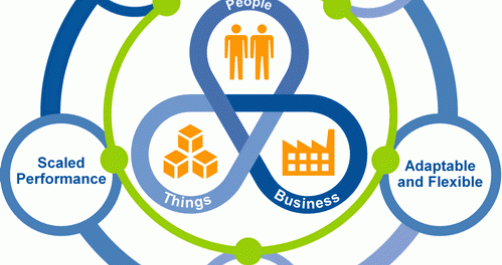What Is Industrie 4.0 and What Should CIOs Do About It?
Industrie 4.0 is a German-government-sponsored vision for advanced manufacturing. However, the scope of coverage and increasing awareness in other regions spurs confusion. So what is it, and what do CIOs need to do about it?
Figure 1. Industrie 4.0 in Perspective

Source: Gartner (May 2015)
The underlying concept of Industrie 4.0 is to connect embedded systems and smart production facilities to generate a digital convergence between industry, business and internal functions and processes.
Industrie 4.0 refers to a fourth industrial revolution (following water/steam power, mass production and automation through IT and robotics) and introduces the concept of "cyber-physical systems" to differentiate this new evolutionary phase from the electronic automation that has gone before.
“Industrie 4.0 encompasses many technologies and business designs, including the Internet of Things and digital business, but is not synonymous with, or a replacement for, any one specific technology,” said Steve Prentice, research vice president and Gartner Fellow.
Although Industrie 4.0 starts with advanced manufacturing, the ultimate impact will transcend into other segments including utilities and smart cities — where, at some point, production activities will be coordinated (or even suspended) to accommodate increased energy demand within the smart grid and other elements of the smart city. These touch the development of new IT- and technology-centric education and work opportunities, as well as the development of real-time data that will operate and manage broadband information and communication technology infrastructure, buildings and traffic systems.
It is also worth mentioning that although the majority of pilots, incubation and experimentation are confined to the DACH region, Industrie 4.0 will not be confined to the DACH region. Every industry that is becoming more automated, more data-driven or that deploys more technology, will be caught up under Industrie 4.0. Equally, anything that is connected to the Internet, or that produces data (or consumes it) to optimize operations and generate value is a potential target.
While Industrie 4.0 is a far-reaching, aspirational initiative that offers great promise, it also represents a quantum leap for most organizations.
“We believe that CIOs will be best served by breaking the sweeping aims (and to some extent the "one size fits all" approach) of Industrie 4.0 down into much smaller, more manageable elements, and they should focus their investments to take smaller incremental steps,” Mr. Prentice said.
These might include:
- Combining data from both internal and external sources to improve decision making in creating feedback loops to improve product and process designs.
- Developing the competencies (and mutual trust) to better integrate IT and OT within the organization, including the integration of security and risk management across these two domains.
- Inventorying existing IT support for manufacturing and identifying where further digitalization is needed.
- Understanding how the underlying technologies of Industrie 4.0 may impact the localization of manufacturing operations (rather than globalization) to determine the optimal tradeoffs between cost, innovation and supply.
- Working toward concurrently developing smart products and smart manufacturing processes, but on a focused and incremental basis where the investments can be clearly justified and the benefits are clearly apparent.
Mr. Prentice will further explore the Trends Driving Industrie 4.0. The Internet of Things and Digital Business at the Gartner CIO & IT Executive Summit 2015, May 20-21 in Munich, Germany.
Gartner clients can read more about this as well in the report, “Industrie 4.0 – The Ten Things the CIO Needs to Know.”














